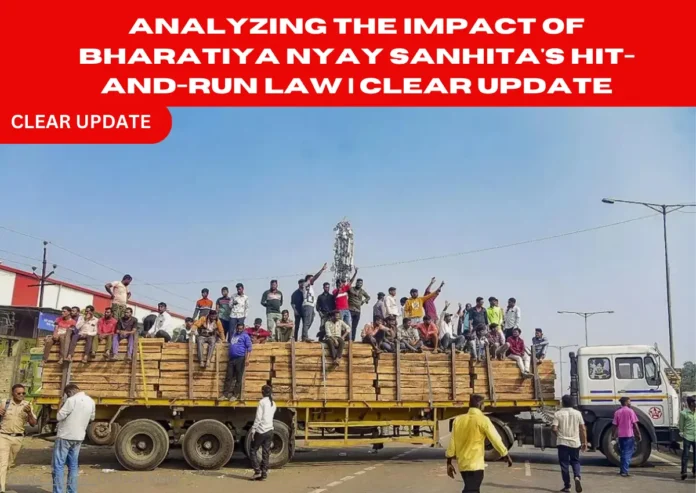Introduction
The Bharatiya Nyay Sanhita (BNS) has ushered in a new era of legal reforms in India, particularly addressing critical Hit-and-Run cases. This revolutionary law aims to enhance road safety by imposing stricter penalties on drivers responsible for serious accidents who subsequently flee the scene without reporting to the authorities. This article delves into the significant implications of the BNS hit-and-run law, analyzing its potential impact on accident statistics, public reaction, and the future of the trucking industry.
Read Also: India-Maldives Crisis: The Fallout from PM Modi’s Lakshadweep Visit Revealed | Clear Update
Stricter Penalties Under BNS
Under the BNS hit-and-run law, drivers involved in such accidents now face considerably harsher penalties than under the previous provisions of the Indian Penal Code (IPC). The maximum punishment has been increased from two years to a staggering 10 years of imprisonment or a hefty fine of ₹7 Lakh. This shift reflects a sincere effort by lawmakers to deter negligent driving and hold individuals accountable for their actions.
Read Also: Captain Miller: Dhanush’s Magnum Opus Unveiled | Clear update
Alarming Statistics
In 2021, India witnessed a staggering 57,415 hit-and-run accidents, resulting in 25,938 deaths and 45,355 injuries. These incidents accounted for 13.9% of all accidents and a significant 16.8% of all deaths due to road accidents in the country that year. The severity of these figures underscores the necessity of the BNS law, emphasizing the need to make individuals responsible for their actions and safeguard the lives of citizens.
Read Also: AR Rahman’s birthday and his journey in the world of music. Clear Update
Public Reaction and Industry Concerns
Despite the well-intentioned goals of the BNS law, it has faced strong opposition from truck drivers across India. Their primary objection revolves around the perceived harshness of the penalties, with concerns about financial difficulties and potential career risks. The All India Motor Transport Congress has actively called for the withdrawal of the law, citing worries about possible harassment.
These protests have caused significant disruptions to transportation and supply chains, impacting the distribution of essential goods. Approximately 70% of trucks and containers in Mumbai were off the roads during a three-day strike, highlighting the widespread concern within the trucking industry.
Read Also: Dominant Performance by Rinku Singh Propels Uttar Pradesh in Ranji Trophy Clash
Future Impact on Accident Statistics
The implementation of the BNS hit-and-run law is expected to bring about significant changes in India’s road safety landscape. The increased severity of penalties is likely to serve as a powerful deterrent against careless driving, potentially leading to a reduction in hit-and-run incidents. Drivers, now more aware of the severe consequences, may be inclined to stay at the scene, improving response times and aid to victims.
Furthermore, the legal changes could instigate a cultural shift in driving behavior, promoting more responsible and cautious practices. Over time, this shift could contribute to a gradual yet substantial decrease in accidents, injuries, and fatalities on Indian roads.
Read Also: Realme C67 | Specifications | DRT
Government Response and Future Outlook
Recent developments indicate a potential reconsideration of the new hit-and-run law. Union Home Secretary Ajay Bhalla has expressed willingness to consult with the All India Motor Transport Congress before finalizing any new penal provisions. The government’s appeal to truck drivers to resume work signifies an ongoing dialogue, acknowledging the concerns raised by the industry.
Read Also: Xiaomi Redmi Note 13 | Specifications | DRT
The Bharatiya Nyay Sanhita’s hit-and-run law represents a pivotal moment in India’s legal approach to road safety. While facing opposition from certain quarters, the potential benefits in terms of reduced accidents and improved accountability cannot be ignored. The ongoing dialogue between the government and industry stakeholders will shape the future trajectory of this critical legislation. As we navigate these changes, it is imperative to strike a balance between enforcing strict penalties and addressing legitimate concerns within the transport sector.





[…] Read Also: Analyzing the Impact of Bharatiya Nyay Sanhita’s Hit-and-Run Law | Clear Update […]
[…] Read Also: Analyzing the Impact of Bharatiya Nyay Sanhita’s Hit-and-Run Law | Clear Update […]